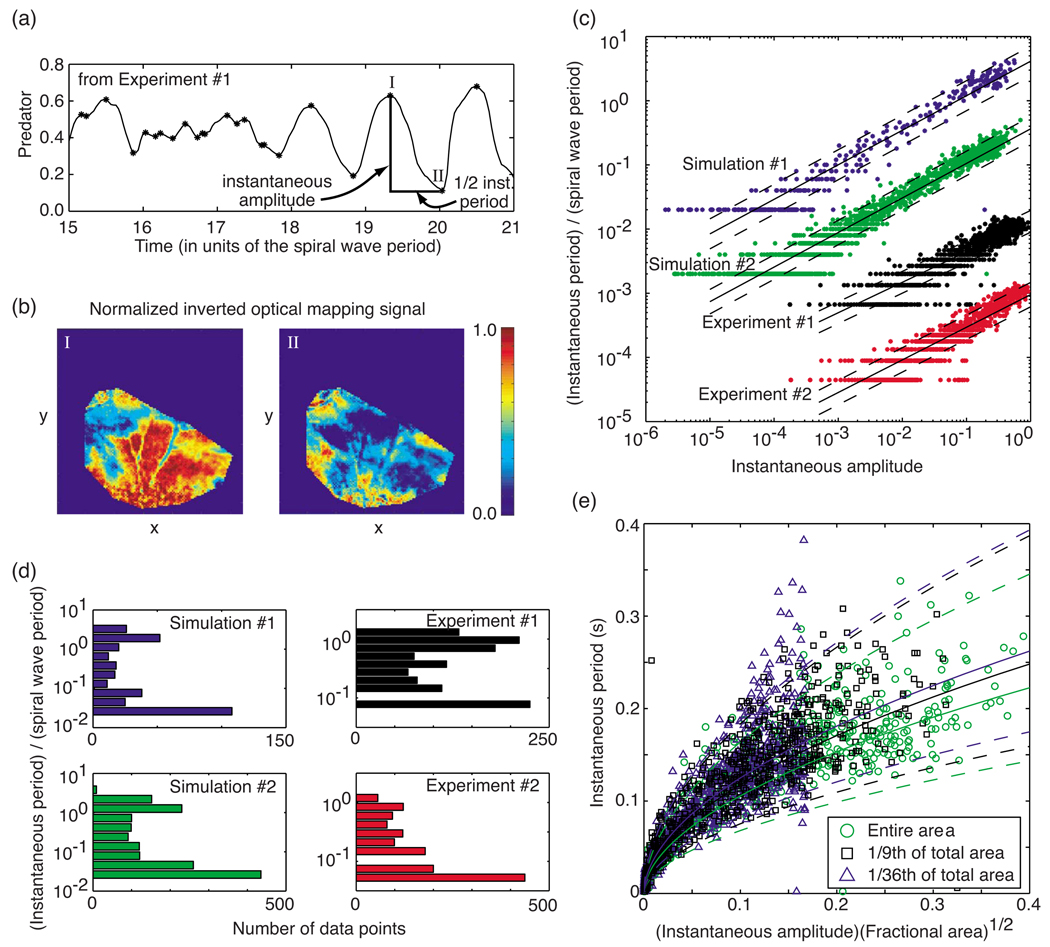FIG. 11.
(Color online) (a) Definitions of instantaneous period and amplitude illustrated using a portion of experiment No. 1 data (see below). Asterisks mark the calculated local extrema of the data. (b) Optical mapping snapshots of the membrane potential (red = activated) in a right ventricular endocardial preparation taken at the two times marked as “I” and “II” in panel (a). (c) Instantaneous periods T relative to the spiral wave period plotted vs the corresponding amplitudes A of the predator quantity for two simulations (simulation No. 1, ; simulation No. 2, ) and two experiments (experiment No. 1, right ventricular epicardial preparation perfused with low-calcium (0.125 mM) Tyrode solution; experiment No. 2, right ventricular endocardial preparation with blebbistatin 20 µM added to normal Tyrode solution to reduce mechanical motion. Slopes of the least-squares fit of log(T) vs log(A): simulation No. 1, 0.538; simulation No. 2, 0.538; experiment No. 1, 0.474; experiment No. 2, 0.509. The bottom three data sets were offset downwards by 1, 2, and 3 orders of magnitude from the simulation No. 1 data set, for clarity. (d) Distribution of data vs the instantaneous period (relative to the spiral wave period; logarithmic binning) for the same simulations and experiments as in (a). (e) Instantaneous period T vs instantaneous amplitude A of the predator quantity multiplied by the square root of the fraction of total area used to calculate the predator quantity. Three data sets are shown, all from the same simulation (), with the predator quantity calculated from the entire simulation region (green circles), 1/9th of the region (black “+’s”), and 1/36th of the region (blue triangles). The log-log fits least-squares slopes were found to be 0.538, 0.539, and 0.535, respectively. In both (c) and (e), the solid lines depict the least-squares fit; the dashed lines mark unit standard deviation departures from each fit.

